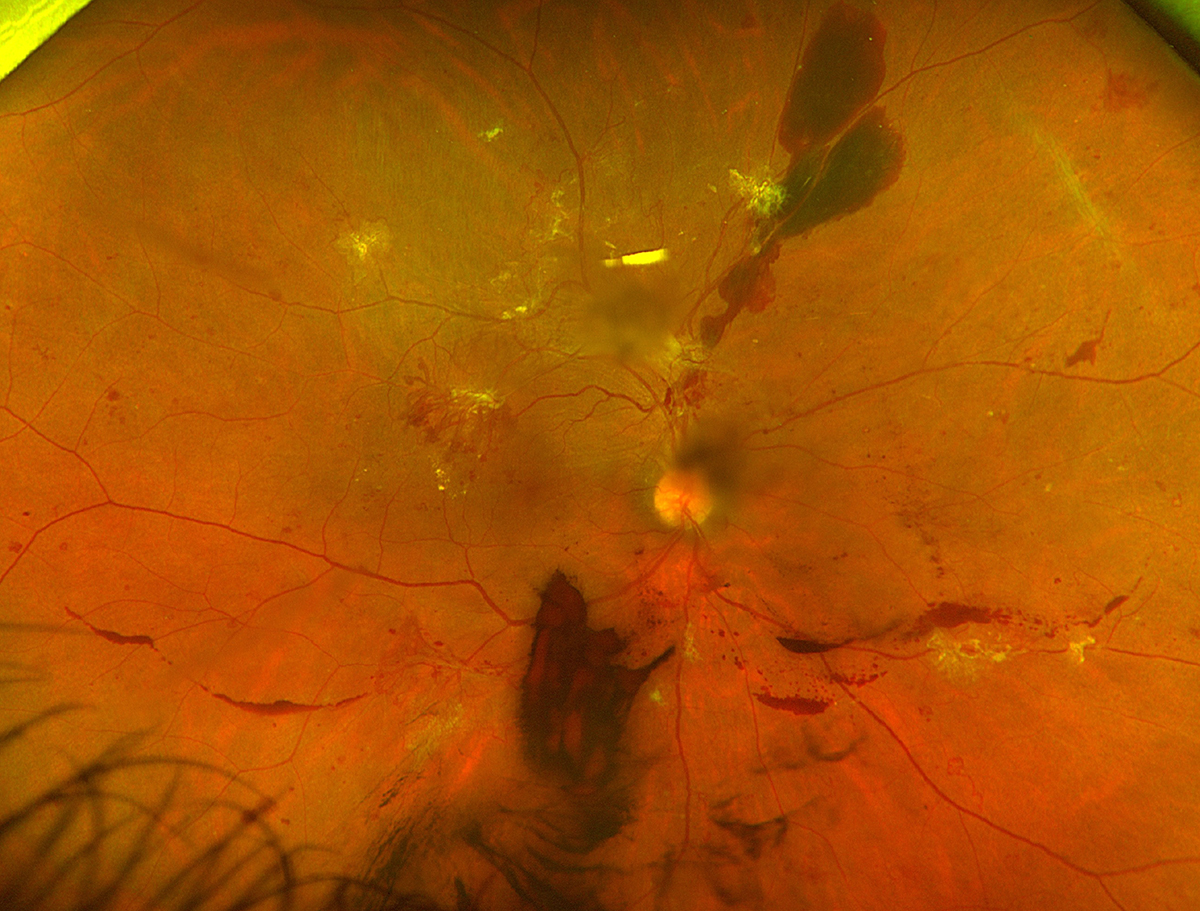 |
|
The overall lack of universally accepted standardized definitions for DR affects the ability to compare outcomes between studies, assess generalizability of multi-study findings in reviews and adversely affects the reproducibility of studies in other settings. Photo: Rami Aboumourad, OD. Click image to enlarge. |
The increasing interest in data standards within the eyecare community creates a need for standardized terminologies and definitions for workhorse phrases like disease (and associated severity) and visual acuity. Because these concepts are often used to define trial cohorts or outcomes, researchers at University of California San Diego believe it is critical that these clinical concepts are standardized to ensure robust and generalizable analyses and AI models. Their recent study, published in Ophthalmology Science, focused on how diabetic retinopathy (DR) was defined by performing a literature review of retrospective studies using codified DR definitions and broadly analyzing the variations. The team found significant variation in which coding systems were used and how they define DR cohorts.
The analysis included 43 studies spanning a 15-year period. The most common study design was a retrospective cohort study (n=27) and less commonly cross-sectional (n=11) and case-control (n=4). The most common data sources were EHR or claims-based datasets only (n=20), respectively, while only a couple studies used multimodal data (n=2). All but one of the studies used billing codes such as the ICD-9 or ICD-10 either alone or in addition to another terminology for defining disease.
This study had three key findings: (1) there was substantial variation in coding systems used to define DR cohorts, (2) even with studies that used the same coding systems, different definitions were used and (3) the vast majority of studies used provider-defined billing diagnosis codes, with only a small minority using procedure codes or other clinical data elements.
Of the 27 included studies that used ICD-9 and the 20 studies that used ICD-10 codes, the most common codes used pertained to the full spectrum of DR severity. DR complications (e.g., vitreous hemorrhage) were also used to define some DR cohorts.
“Thus, there exists a secondary need for standardizing disease definitions within a coding system for various DR entities (i.e., proliferative disease, center-involving diabetic macular edema, DR with vitreous hemorrhage, DR with tractional retinal detachment) among other ophthalmic diseases,” the study authors wrote in their paper.
“This case for standardization for large data analyses extends beyond coding systems used and has important implications for imaging standards for eye care,” the team added. “These large datasets will not only need to address standardized methodologies used to define diseases but also ensure accurate and complete data and accessibility.”
Chen JS, Copado IA, Vallejos C, et al. Variations in electronic health record-based definitions of diabetic retinopathy cohorts: a literature review and quantitative analysis. Ophthalmol Sci. January 24, 2024. [Epub ahead of print]. |

